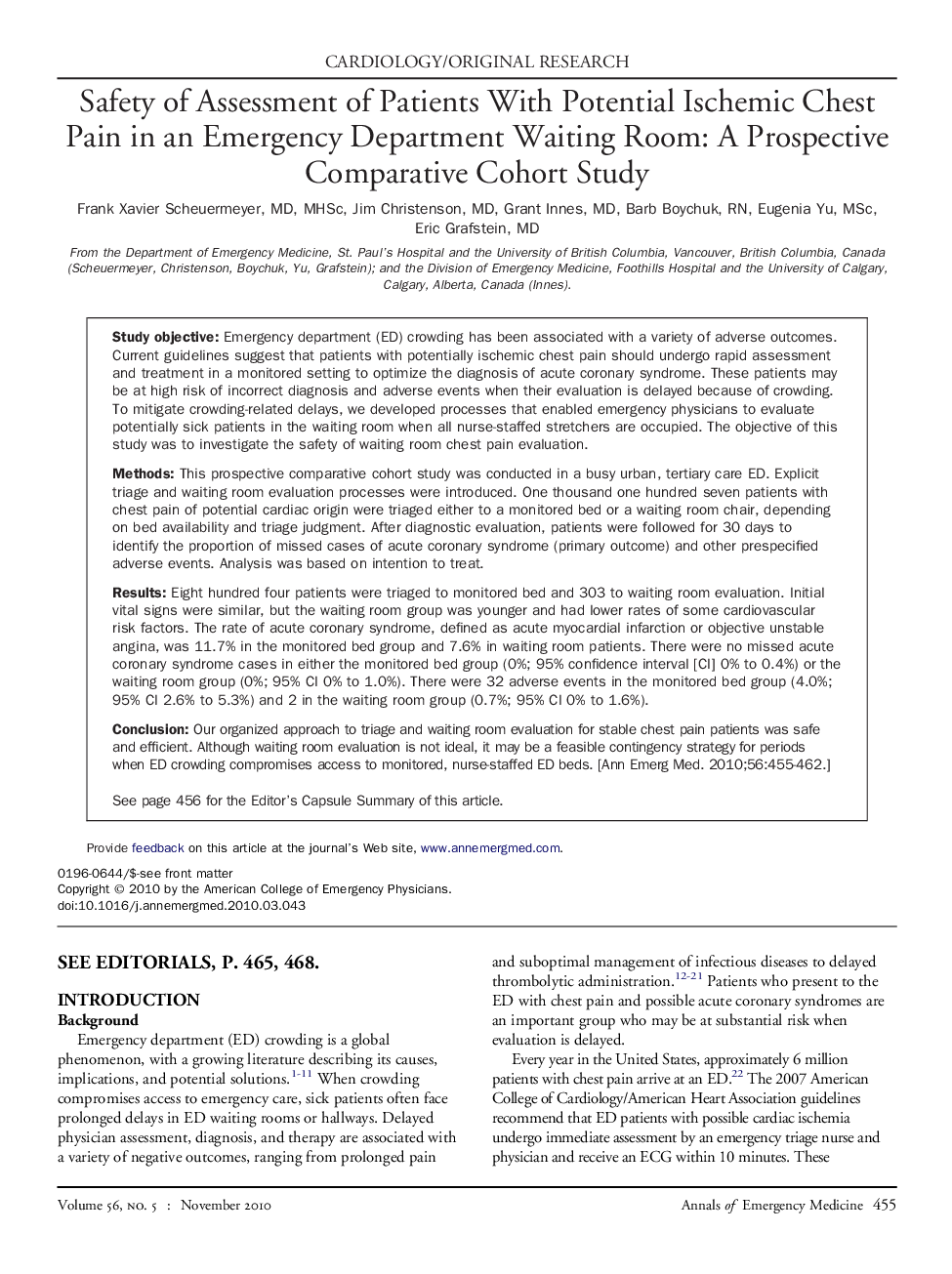| Article ID | Journal | Published Year | Pages | File Type |
|---|---|---|---|---|
| 3231411 | Annals of Emergency Medicine | 2010 | 8 Pages |
Study objectiveEmergency department (ED) crowding has been associated with a variety of adverse outcomes. Current guidelines suggest that patients with potentially ischemic chest pain should undergo rapid assessment and treatment in a monitored setting to optimize the diagnosis of acute coronary syndrome. These patients may be at high risk of incorrect diagnosis and adverse events when their evaluation is delayed because of crowding. To mitigate crowding-related delays, we developed processes that enabled emergency physicians to evaluate potentially sick patients in the waiting room when all nurse-staffed stretchers are occupied. The objective of this study was to investigate the safety of waiting room chest pain evaluation.MethodsThis prospective comparative cohort study was conducted in a busy urban, tertiary care ED. Explicit triage and waiting room evaluation processes were introduced. One thousand one hundred seven patients with chest pain of potential cardiac origin were triaged either to a monitored bed or a waiting room chair, depending on bed availability and triage judgment. After diagnostic evaluation, patients were followed for 30 days to identify the proportion of missed cases of acute coronary syndrome (primary outcome) and other prespecified adverse events. Analysis was based on intention to treat.ResultsEight hundred four patients were triaged to monitored bed and 303 to waiting room evaluation. Initial vital signs were similar, but the waiting room group was younger and had lower rates of some cardiovascular risk factors. The rate of acute coronary syndrome, defined as acute myocardial infarction or objective unstable angina, was 11.7% in the monitored bed group and 7.6% in waiting room patients. There were no missed acute coronary syndrome cases in either the monitored bed group (0%; 95% confidence interval [CI] 0% to 0.4%) or the waiting room group (0%; 95% CI 0% to 1.0%). There were 32 adverse events in the monitored bed group (4.0%; 95% CI 2.6% to 5.3%) and 2 in the waiting room group (0.7%; 95% CI 0% to 1.6%).ConclusionOur organized approach to triage and waiting room evaluation for stable chest pain patients was safe and efficient. Although waiting room evaluation is not ideal, it may be a feasible contingency strategy for periods when ED crowding compromises access to monitored, nurse-staffed ED beds.
